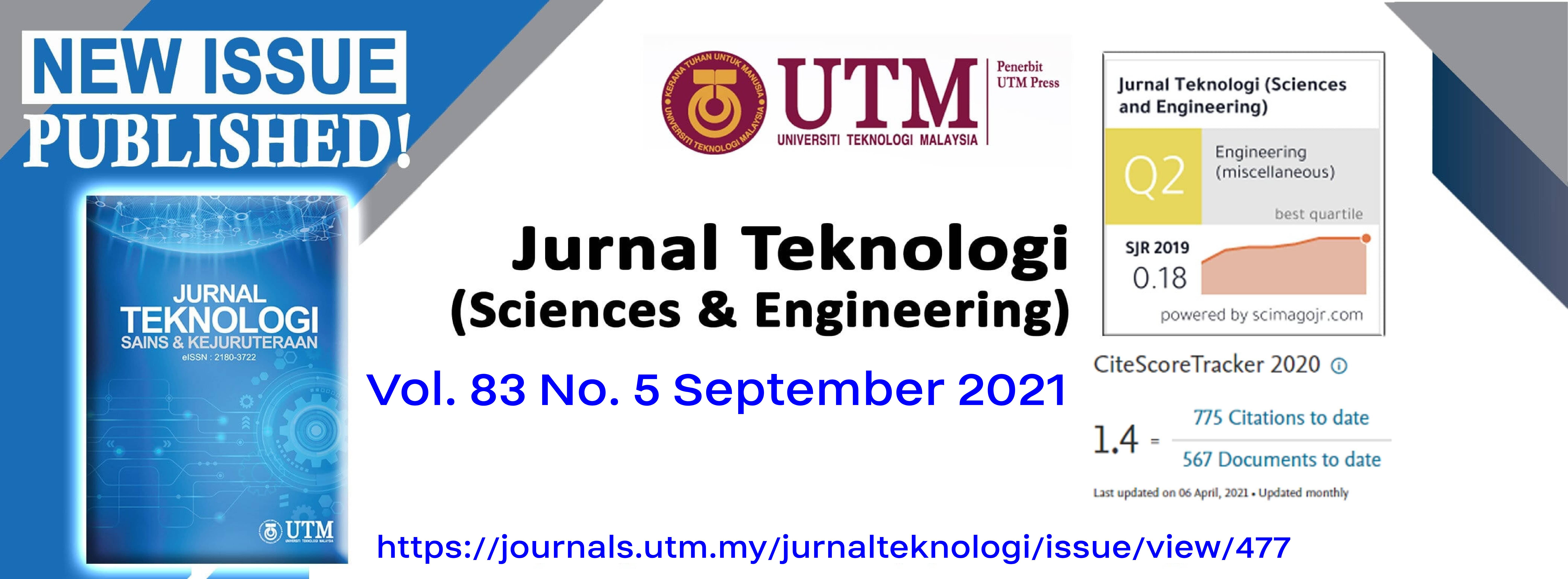PHYSICAL PROPERTIES OF NOVEL α-Fe2O3/NiO HETEROSTRUCTURES THROUGH IMMERSION/ SOL–GEL SPIN COATING METHOD: DIFFERENT DEPOSITION NUMBERS OF NiO LAYER
DOI:
https://doi.org/10.11113/jurnalteknologi.v83.16793Keywords:
-Fe2O3/NiO heterostructure, immersion, sol–gel spin coating, sensor, solar cellAbstract
The novel hematite (α-Fe2O3)/nickel oxide (NiO) heterostructures were grown on fluorine-doped tin oxide (FTO) coated glass substrates at various deposited NiO of 3, 5, and 7 layers. The heterostructures were successfully synthesized using the immersion and sol–gel spin coating methods for α-Fe2O3 and NiO films, respectively. The field emission scanning electron microscopy analysis showed that each sample of α-Fe2O3/NiO heterostructures has a unique surface morphology when deposited with different NiO layers. The X-ray diffraction pattern shows that the number of NiO layers affected the diffraction peaks. The NiO diffraction peak intensity at (111) plane increased when the deposition number of NiO layer was increased. The crystallite sizes of NiO were 35.4, 33.6, and 38.0 nm for 3-, 5-, and 7-layer NiO, respectively. The interplanar spacing, lattice parameter, and unit cell volume indicate NiO with 3-layer as the highest, while 5- and 7-layer had the same values. Meanwhile, the strain and stress values show the compressive strain and tensile stress, respectively. The optical properties reveal that the highest transmittance and the lowest absorbance percentages were recorded for a 3-layer NiO sample. In contrast, the lowest transmittance and the highest absorbance percentages were obtained for the sample with 5-layer NiO. Different thicknesses and morphologies of heterostructures explained these situations. In addition, each unique heterostructure of α-Fe2O3/NiO with high visible light absorption nature is perceived to reduce the bandgap energy and has the potential to be used in sensor and solar cell applications.
Downloads
Published
Issue
Section
License
Copyright of articles that appear in Jurnal Teknologi belongs exclusively to Penerbit Universiti Teknologi Malaysia (Penerbit UTM Press). This copyright covers the rights to reproduce the article, including reprints, electronic reproductions, or any other reproductions of similar nature.
















